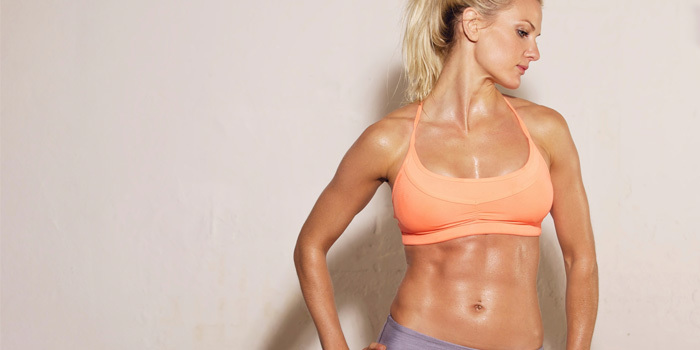
When it comes to creating incredible abs, even the most effective workout programs can only bring you so far. That’s because you can’t get a flat, hard midsection without losing body fat. No matter how much effort you put into creating a six-pack, no one’s going to see it if it’s covered by a layer of flab.
If you’re following the dietary guidelines of our fitness programs, you’ll automatically be eating the right foods to lose fat as you get in shape. But the following six principles can give you an extra edge, and will help ensure that the effort you’re putting into your abs will bring you the results you want.
1. Get plenty of protein
Eating enough lean protein promotes fat loss and muscle gain, the two most important elements for developing great abs. It also helps keep you from getting hungry while you’re eating right. You don’t have to gobble down 12-ounce steaks—just eat a normal portion of lean meat, fish, low-fat dairy, or vegetarian protein with every meal, and make sure your snacks contain some protein, too. If you still have a hard time getting enough in your diet, a daily Shakeology shake can be a perfect addition.
By the way, protein is especially important in the morning, when a lot of people don’t get as much as they should. A protein-rich breakfast will help keep your blood sugar steady for hours, preventing the dips that can lead to cravings later in the day. (Try some low-fat chicken sausage, or an omelet with one whole egg and three egg whites, along with fruit or whole-grain toast.)
2.Reconsider your carbs.
Despite the popularity of low-carbohydrate diets, the average American meal is still too high in sugar and fast-burning starches to bring body fat down to ab-baring levels. It’s time to say goodbye to sweetened soda, ditch the Doritos, and save the cake for your birthday. If your fitness plan calls for a sports drink before a long cardio workout, or a carb-and-protein recovery drink after resistance training, that’s fine. But the rest of the time, stick with foods that are on the low end of the glycemic index (refer to GlycemicIndex.com for more information)—these foods burn more slowly, so they won’t spike your blood sugar and insulin levels.
3. Have fun with fiber.
Something about the word “fiber” just doesn’t sound appetizing. But high-fiber foods can actually be quite delicious: fresh berries and other fruits, salads loaded with colorful produce, your favorite steamed vegetables or vegetable soup, stews or chili made with beans, chewy whole-grain breads and cereals…You get the picture. (These foods just happen to be loaded with nutrients as well.) High-fiber foods keep you fuller with fewer calories, and they help keep your digestive system working at its best—a double-whammy for getting rid of belly bulge.
4. Enjoy some yogurt.
Probiotics, the healthful bacteria found in yogurt and other fermented foods, have been proven to help reduce belly fat. In a recent study in Finland, new mothers who took probiotic supplements averaged smaller waist circumferences—and lower body fat in general—than those who didn’t take probiotic supplements. And while the topic is still controversial, studies have found that eating lots of calcium-rich dairy foods like yogurt may increase overall weight loss.
5. Don’t forget to eat.
Tempted to lower your daily calorie count by skipping meals? Don’t. Going hungry can raise your levels of the stress-related hormone cortisol, which research has found can increase belly fat even in otherwise thin women. And eating too infrequently can lower your metabolism and energy levels, while increasing the chance that you’ll get too hungry and decide to chuck your meal plan entirely. If you’re eating the right foods, regular meals and snacks will keep your body fueled while you’re working toward that strong core.
6. Drink more fluids. Hydration is important when you’re on a fitness plan, but drinking plenty of water has particular benefits for your midsection. It helps keep your stomach full, so you don’t overeat, and it helps flush out excess sodium to prevent belly bloating. (Eating more potassium-rich foods, such as tomatoes and bananas, will also help in this area.) Plain ol’ H20 can’t be beat, but you can also switch it up with flavored waters, iced tea, and anything else you like to drink that isn’t full of sweeteners. How much do you need? The old rule of 8 glasses a day is a good start, but everyone is different: drink more if you’re exercising or it’s hot out, and drink less if you’re running to the bathroom every 5 minutes.
If you add these rules to your fitness plan, you’re sure to see faster improvements in your midsection. Of course, there’s an added bonus to eating this way: it’ll keep you healthier, too. That may not be as big an inducement as great abs, but we’re throwing it in for free.




No comments:
Post a Comment